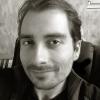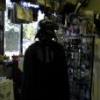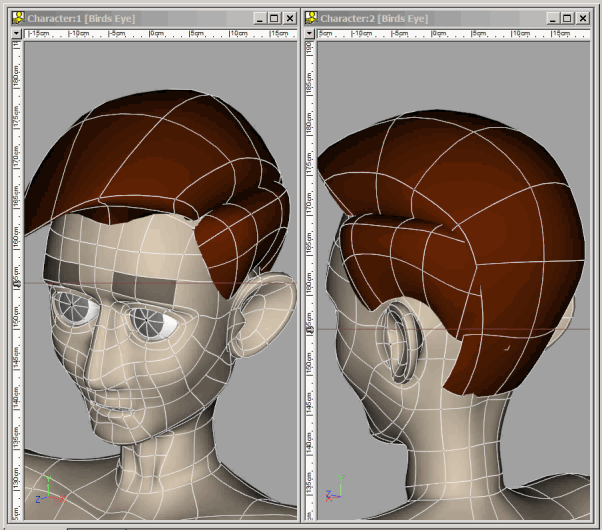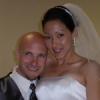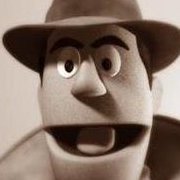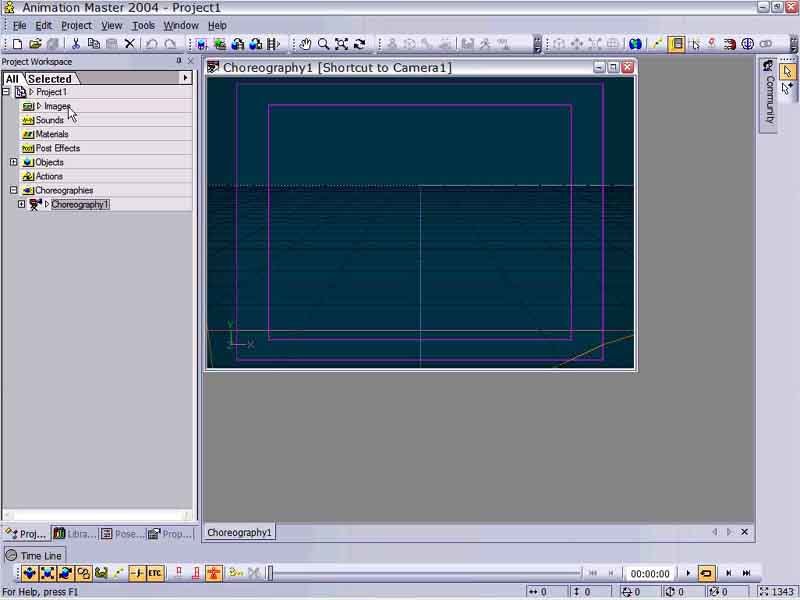Search the Community
Showing results for 'snap to surface'.
-
Welcome back, Al! Remember, that ease comes because it take many fewer CPs to make a shape in A:M than vertices in a polygon modeler. 1) Keyboard 4 will constrain a CP to the direction of the spline at the point it starts from. If the spline is curved you will change the shape of the curve as you drag it but I use this quite a bit to adust CPs in a mesh, none-the-less. Also... 5 will constrain the CP to motion perpendicular to the original spline. 6 will constrain it to motion perpendicular to the surface. 2) the CutPlane plugin can do this in simpler situations. It can insert a spline ring (or unsplined CPs) at the intersection of the cutting plane with a mesh. 3) I think so? 4) You may define any res you want, limited only by your RAM and patience. 5) The Snap To Surface tool allows you to draw new splines on the surface of another shape as a guide. Informally called "retopolgy" on the forum. 6) That should be fine. That's way more than I have. 7) Besides the goat?
-
It's possible you have something called "snap to surface" on. This new feature is for drawing splines/resplining on an imported polygon prop. Ray traced lights are slow, but you can get accurate fuzzy ray-traced lights by setting the light "width" wider and increasing the "rays" parameter. Use the narrowest width and fewest rays you can get by without grainy looking shadows.
-
Are you baking your particles? As far as my approach to geometry based hair there are quite a few tutorials on cloth so it might be best to point you to those. In the meantime I'll offer this: ---------------------------------------------------------------------------------------------------------------------------- Cloth Simulation ---------------------------------------------------------------------------------------------------------------------------- The basic approach is: Create two materials: 1 - Cloth 2 - Cloth Deflector 3 - Apply those to meshes and then simulate Rename these materials as Cloth and ClothDeflector or something easier to find later. (A:M doesn't automatically name them anything particularly useful so we have to do that) Create the mesh that you will use as hair, fire, smoke or whatever you will be attempting to create via the cloth simulation. Considerations: When dealing with cloth simulation there are several 'tricks' to getting it to perform with maximum control. Here are a few: - Use Named Groups! By naming Groups we can not only better understand and organize we can layer in effects. For instance, having a group of objects that will serve to deflect the cloth (i.e. it has the Deflector Material applied to it) that is invisible (turn its surface property to Transparent=100%). In this way you can channel and direct the simulation in interesting ways. - Consider leaving dangling splines outside of the area to be simulated. These will ground the cloth to something stable that will not be directly effected by the simulation. In the case of hair these might be below the surface of the 'skin' that the hair will appear from. I try to select these dangling splines and name them something like 'base' so that they can be modified later. - Consider the distance from each object you've created. Overlapping meshes will cause the cloth simulation to error out because it can't properly calculate the interactions and directions. (i.e. it doesn't know which way is up because we've confused it by having interpenetrating meshes) - Consider saving out/exporting a frame of the animated simulation as a separate model. In this way you could generate thousands of resources simply by launching one simulation. We then can animate those separately or... simulate them again in other ways. ---------------------------------------------------------------------------------------------------------------------------- Forces ---------------------------------------------------------------------------------------------------------------------------- Adding forces (via Right Click/Add/Force) in an Action or Choreography allows us to push and pull geometry around in a dynamic way. This is especially useful for cloth simulation. We can hide or lock objects or add invisible objects in between the force and their location to 'protect' them from being effected in the same way as those areas that are fully effected. ---------------------------------------------------------------------------------------------------------------------------- Render As Lines (RAL) ---------------------------------------------------------------------------------------------------------------------------- Render As Lines is considerably more basic than cloth simulation and is not as versatile because there are no patches. It is important to note however that RAL can and generally should be augmented by the use of patches. For example you might have a cool looking robot and just add some detailed lines over the top of the robot's mesh to add the appearance of additional details. With v17s new 'Snap to Surface' features adding splines to the surface of a model is easy whereas before we had to painstakingly turn our models around or view them from multiple angles simultaneously to make sure the lines were on the surface. In my estimation the secret to RAL is using Named Groups to layer in of additional properties on the same splines/shapes. Using a little roughness and then adjusting the scale of that roughness can create some very interesting effects. Because RAL does generate some rendering artifacts on occasion it's often best to take this one step further and convert the splines to geometrical (patch rendering) shapes. This is trivial and easy to do with use of the Sweeper plugin. Just draw a little spline shape (say three CPs connected) and name it as a Named Group (because I will delete it later I often name mine, "Use Me". Then I can easily find it in the Sweeper dialogue. ---------------------------------------------------------------------------------------------------------------------------- Sweeper plugin ---------------------------------------------------------------------------------------------------------------------------- The Basic Steps to use Sweeper: Create the splines you wish to sweep (It's best to Name this as a Group although technically it isn't necessary) Create the shape or object you wish to sweep (name this Group) Select the splines you wish to sweep Right Click and go to Plugins/Sweeper Select the shape you wish to sweep from the list of Named Groups in the drop down menu Adjust other parameters as necessary Launch the sweep The swept shape will automatically be named so it will be easy to move away from the splines used to create it. That original spline can then be adjusted or used for additional sweeping or discarded. If the swept object isn't to your liking simply delete it and sweep again with different settings. Move them to the side if you wish to compare multiple sweeps with different settings. That is a basic primer for the areas under consideration. As I mentioned before, I haven't actually pressed into the classic use of decalled hair that is then cloth simulated. This is especially powerful because we can use Patch Images (with all of their various Image Types) to layer in the hair. That hair can then be further animated/simulated. It should also be noted that once we've got the geobased system in place we can further augment that with particles based effects (to include but not necessarily requiring particle hair). For instance, geobased hair might be further enhanced through the use of sprites or blobby effects. The general premise being to accomplish what we can with simple geometry and use particles to achieve what cannot be easily achieved complex geometry and interactions which is what particles attempt to simulate.
-
This is getting hard... okay so what I can remember is: Version 15 (2008) Liquids, Baked Surface (bake materials and decals to decals), Hash Animation:Master Realtime (HA:MR) integration (no longer available in newer versions) Version 16 (2011) 64-bit Version, Netrenderer-integration with Multicore-support, 3d connexion device support, OBJ-MDD-Animation-Export, overall performance-boost Version 17 (2012) Snap to Surface (Retopology-Tool), Animation:Master Answers, SSE4 instruction support, Create your own "Support"-page, Animate-Mode indicator, Improved Cloth-Simulation with Hi-res Simulation, STL-Export (with resolutionlevels up to 64 instead of formerly 16 polygones per patch) You can find tutorials for Snap To Surface on my website. (see below) There is very likely much much more that I am not aware of now... See you *Fuchur*
-
DJ added this to his report: Requested Tools: 1. Snap to intersection. (with a button instead of a key so you can turn it on and off) 2. Set "Y" key to snap to midpoint of line as in the model window. 3. Mouse right click and drag to select is not available and would be handy. 4. Distortions Box as in model window. My initial thought is to consider if these features already exist for Snap to Surface workflow within a Modeling window. This provides a framework from which to study and better understand the workflow with Props in the Chor window. The image DJ provided isn't exactly clear with regard to what he is after: Image Link But Fuchur helped determine what he was after: Fuchur asked: DJ responded: This appears to be a new feature request and not just an enhancement.
-
Installers: v17.0 Beta 01 Win 32bit v17.0 Beta 01 Win 64bit v17.0 Mac Beta 01 Change Log: fixed all [bug]6089[/bug] Manipulator Options>Translate Only makes bone disappear fixed all [bug]6076[/bug] CameraPostEffect - Active Off?property does not work. fixed all [bug]6083[/bug] Snap Manipulator to Grid is broken "Snap Manipulator to Grid" and "Snap Mouse to Surface" now mutally exclusive fixed all [bug]6082[/bug] CutPlane plugin confused by close splines changed all for [bug]6050[/bug] if the "Property Info" window is visible , the help text for the property is now displayed, when the property is selected if the property is a plugin property , than the title line displayed also the plugin name added possibility to edit the documentation/external links in A:M self Beta0 Change Log: changed windows installer the installer check's now , if the target processor support the SSE4 extensions and install in this case a SSE4 optimized version changed windows 64 bit a processor with SSE3 support is now the minimum requirement for the 64 bit version changed windows final render now uses for some funtions a SSE3/SSE4 optimized vector class changed mac final render now uses for some funtions a SSE3 optimized vector class changed all rendertime and memory usage are now logged into master.log fixed all finalrender rendertime prediction and status for props and particelsystem fixed fixed mac [bug]6067[/bug] mdd export not working on mac Render time comparison all times in seconds Project1 threeteapots (the forum benchmark) Project2 modified threeteapots (bigger size, multipass, additional model, material plugin) Project3 modified threeteapots (bigger size, multipass, additional model with hair, material plugin, additional prop model) windows 32 bit V16 V17 V17_SSE4 Project1 225.556 223.864 179.74 Project2 300.213 298.786 236.771 Project3 392.736 388.575 323.397 windows 64 bit V16 V17 V17_SSE4 Project1 159.363 135.184 127.933 Project2 210.555 178.494 169.374 Project3 274.396 238.294 227.177 OSX V16 V17 V17_SSE4 Project1 224.469 198.603 na Project2 294.348 265.616 na Project3 436.776 349.503 na Complete Change Log: http://www.hash.com/reports/changelog_page.php
-

"Paint fall" Image Contest WIPs
robcat2075 replied to robcat2075's topic in Work In Progress / Sweatbox
As time was running out I decided to try helmet hair instead of particle hair. I started by using "snap to surface" to draw a spline where the part in the hair would go and then extruded that up and across the head one section at a time to make "the big flip." Then I did that again in the other direction to do the small side of the part. I didn't worry about the back too much since that wasn't going to show in my still image. Turns out, I do my hair pretty much the same way our President does his! (click to animate) -
There is a new feature called "Snap to Surface" You import a model or prop and you can draw new splines on it. This would be a way to create a thin spline mesh on a dense polygon model.
-
Additional Background: Snap to Surface is the underlying feature Steffen brought to life from the initial request for a tologology tool from Fuchur: Ref: Report: 5999 I want to also add this from yet another request/report that Steffen coded into A:M. That is the ability to set the Snap to Surface distance in Tools/Options/Modeling tab. He also says (and I paraphrase): A:M uses the normal direction from the underlying object, so the distance is the same at every added cp. To activate the offset, hold the Shift key down while adding the CP. In this way you can work in 'mixed' mode. Offsetting or Not Offsetting as you feel the need. Ref: Report: 6107
-
Thanks for the quick response folks. If I do come back to A:M, then I would most likely be giving up the polygon modeling. It's just that I have so many models that I have made and rigged right now, it would be kind of hard to say good bye to them. But, this might just be the way to go in order to do the animations that I want to. I suppose I could still use FaceGen and/or Poser to create human characters, then bring them into A:M, and use the Snap To Surface to recreate the model in A:M. I still suck at organic modeling. I would imagine the renderer has improved from when I used it. Does it support things like sub surface scattering, ambient occlusion and global illumination? Actually, is there a manual I can download which would probably answer a lot of my questions instead of bothering you folks?
-
Ah Yes - true. I'm not finding I need anything denser So, for my purposes, I am finding that it is just simply easier to create a new spline model with both the chor and model windows open, and not necessarily always use the snap to surface tool. I would only use it when it helps, and primarily in chor. What I am finding easiest (and probably, maybe, the way others have been doing it before): 1) Start new chor. Delete everything. Drag/Import the 3D mesh that is to serve as a template into the blank chor (as a prop if .obj) or as a simple primitive model if created in A:M. 2) Start a new blank model, drag into chor. 3) Make the 3D template model unpickable in chor. Optionally make it a color, with transparency. Make it display either as shaded or shaded with wireframe. Make the new model display as wireframe (or whatever), different color. Select the blank model in chor. Go into modeling mode (F5). 4) Open the window for the new blank model. With both model window & chor window open (alt V), start laying down new splines in chor window and model window (thus having access to all tools), and observe in chor window how it conforms to the 3D template. If I want to use the snap to surface feature, then I do it in the chor window and simultaneously observe what's happening in model window.
-
Jason Hampton Video Tutorials links 13 Video Tutorials total so far. - Create Material from Surface property group Tutorial, Video Tutorial - Motion control Video Tutorial or http://www.cameracontrol.com/reels.html - Technocrane Camera Rig and tutorial - SSS demystified Video tutorial The following currently have broken links: - Snap group pivot to grid video tutorial: http://www.hash.com/forums/index.php?showt...+video+tutorial - Screen Capture Video Tutorial: http://www.hash.com/forums/index.php?showt...+video+tutorial - Quicktime pro video tutorial compression settings: http://www.hash.com/forums/index.php?showt...video+tutorials - Auto Save plugin Video Tutorial: http://www.hash.com/forums/index.php?showt...+video+tutorial - 3D Mouse Video Tutorial: http://www.hash.com/forums/index.php?showt...+tutorial\ - Bitmap Plus wood panal Video Tutorial: http://www.hash.com/forums/index.php?showt...p;hl=wood+panal - BVH Motion Video Tutorial: http://www.hash.com/forums/index.php?showt...VH+Motion+video - How to limit Dynamics with Euler limits: http://www.hash.com/forums/index.php?act=a...st&id=46586 - Make Normal Map plugin video tutorial: http://www.hash.com/forums/index.php?showt...t=0&do=findComment&comment=319536 Here's the deal. You have 3 choices. 1. do nothing and get nothing. 2. Create a 5 minute video tutorial or longer with audio on something, anything related to AM, even if its been done b4 because you may have more insight or a new take on the subject. Then donate it to the community. Email me the link jason@jasonhampton.us and I will send you the data DVD's of all my training for hash that I can legally give away. 3. Option 3 click on the link below and buy me something by clicking on the link below.
-
What's the latest on this potential feature. Is it working out? I hope so. If so, will it operate like the snap to surface? Wonder if there would be a way to automate the process where within a certain distance, all the cp's of one model would snap to the cp's of another model. That way, if yopu had the cp's close, they would automatically cling to the nearest one. Would be cool. Dreaming a bit here Cheers, William
-
When snap to surface works I can match the CPs pretty quickly. A Snap-to-CP tool would be ideal in this situation.
-
Just an advisory note: you'll want to make sure you turn off snap to surface when you are finished. It causes all-new kinds of unexpected behavior in the modeling window when it's left on. Inadvertently leaving snap to surface and mirror mode on might even tear a hole in the space-time continuum. :-)
-

Dragon Malificent made with A:M by Charles Babbage for Disney
DrPhibes replied to robcat2075's topic in Showcase
Thanks for the kind words. I try to use A:M when ever it makes sense in our workflow. This dragon started as a smooth, primitive foam scale model (looked like a white Brontosaurus) that was free of any surface detail. I laser scanned the model and then using the snap to surface feature of A:M I created my patch based model of the original foam real life model. This base model is then sent to my mechanical engineer as a solid model (generated using a workflow we have developed with a few other tools) who begins to design the frame and structure inside the dragon. Simultaneous to that I build all the detail into the model (every thorn and rivet) and most importantly rigged the model to run it through all it's motions to check for clearances and collisions of the body parts. When everything is ready, I export STLs and send to a get milled on a variety of large CNC machines including a really cool robot arm. Then most of the parts get laid up with fiberglass directly (to save molding costs) and then assembled and painted. Obviously there is a lot more to it, but that sums it up. Unfortunately with this particular project I cannot publicly share any of the process images or A:M renders. I like using A:M, and have been for more than 20 years now, but it's just one tool in my large toolbox. I don't think I would be able to use A:M as much as I do without the support of a few other tools. Right now about half of my projects run through A:M in some way. I am working on 2 large Disney attractions right now that don't open until 2016 and A:M has been an important part of the process. I also have a large sculpture for the Wynn casino being built in Cotai China that was originated in A:M. You can see more of what we do at www.michaelcurrydesign.com Thanks, Charles -
Agreed! I've been playing with the Snap Group to Surface plugin as well and I really like that. In many instances tossing a group of CPs onto a surface will be a lot quicker than placing the CPs onto a surface manually.
-
Installers: Windows 32Bit Windows 64Bit Intel Mac Change Log: Fixed All [bug]6497[/bug] Hair always jittering Fixed All [bug]6496[/bug] Hair color incorrect in Final renders Fixed All [bug]6459[/bug] Bake surface resolution replaced by fixed presets Changed All Bakesurface default values now the following Resolution 10 Margins 1 Maximum textures size Automatic Overwrite Files True Delete old decals False Delete materials False If Bakesurface is started without the dialog (Shift + LMB) last settings are used the created decalimages having now a new naming scheme "bs_"modelname"_"texturetype"."extension (jpg as default) with this change it's possible to bake more than one model in one projectfile new combobox "Maximum textures size", where You can select wich size the created decalimages should have Automatic - based on Resolution , the best matched size (as in previous A:M versions) 128 - maximum texturesize 128x128 pixel and so one up to 4096x4096 only the 64bit version has the possibility to select 8192 as maximum texture size the algorithm tries now to match this value in one dimension new option "Delete materials" If this is checked , all materialnodes (! INCLUDING particle materials !) are removed from the model and groups and the surface atrributes are set to the default values [*]New All [bug]6413[/bug] Allow undo functionallity in the stamp editor basic undo/redo funtcionality added, selections are not undoable, only cornercp moving is undoable special functionality for command key's + LMB in the stampview (only as reminder) Ctrl key (Mac Command key) + LMB split uv stack and add the nearest corner to selection Shift key + LMB add uvs to selection Alt key + LMB add vertex to selection [*]New All [bug]6456[/bug] Feature request: Option to select the visual representation of bones switching to simple bone draw mode (bones are drawn as simple line instead of shaft) possible with keyboard shortcut "Shift+7" or the button from Tools->Customize->Commands->Draw (you need to add this button manually for the first time) keyboard shortcut can found at Tools->Customize->Commands->Keyboard "Toogle bone draw mode [*]Changes All [bug]6457[/bug] Option to select between Spline/Hold/Linear as default keyframe interpolation !!! Important change !!! affects only new created drivers , for this drivers keyframes are created with the selected default keyframe interpolation You can set this at "Tools"->"Options"->"Action"->"Keyframe Interpolation" if "Default" is selected in most cases the interpolation method is "Spline", the behavior of creating keyframes is in this case the same as in previous A:M versions ! if any other is selected, it overrides the default values for the driver ! [*]Changes All Stampview , if a corner or a group of corners are selectet , not longer display a popup menu , makes no sense in such a scenario [*]Changes All different cursor for "Add Lock Mode" [*]Fixed All [bug]6490[/bug] Crash after Save [*]Fixed All [bug]6482[/bug] New CPs made with Y key not properly placed [*]Fixed All [bug]6478[/bug] Can't create bone chain with Snap Manipulator to Grid ON [*]Fixed All [bug]6491[/bug] Can't Keyframe in Composite [*]Fixed All [bug]6487[/bug] Lights not fully drawn in Bones mode fixed also some realtime draw issues for bones (ghosty circles) [*]Fixed All [bug]6494[/bug] strange snapping was a unwanted sideeffect from #[bug]6445[/bug] Moving cp's in front view don't keep z axis position [*]fixed Opengl Driver [bug]6477[/bug] Mac, OpenGL Causing "Bones Mode" Display Issues [*]Fixed All [bug]6488[/bug] Rotoscopes on lights lost after save and reload of project. see the notes below [*]Fixed All [bug]6486[/bug] Rotoscope image on light not working Not longer allowed to drag rotoscopes on light or camera caches ,only allowed for instances light/camera in a chor/action or lights inside a model notes for the special case lights inside a model (in the bone hierachie) "if show more than drivers" is selected , the rotoscopes are NOT visible but they are still affects rendering, this is a accommodation for netrender it was very tricky to get this to work .... [*]Fixed All [bug]6485[/bug] Splines set to "Render as Line" are not smooth in final render I higly recommend to use the "Resamplespline" plugin in such a case for evenly distributed cp's on the spline.
-
Installers: http://www.hash.com/ftp/pub/updates/window...ta/AM_32BIT.exe (Windows 32bit) http://www.hash.com/ftp/pub/updates/window...ta/AM_64BIT.exe (Windows 64bit) http://www.hash.com/ftp/pub/updates/osx/v17_beta/AM.zip (Mac) Change Log: fixed all [bug]6104[/bug] AM V17 having extremely slow render times. 24 hours to render a frame that takes V16 15 minutes fixed [bug]6100[/bug] Cloth Simulations don't work properly in Camera View fixed all [bug]6097[/bug] Can't create a double linefeed in AMA text fixed all [bug]6101[/bug] Deleting Chor then closing Project causes crash fixed all [bug]6099[/bug] Flocking PRJ causes crash fixed all [bug]6090[/bug] V17 crashes while rendering complex models fixed all [bug]6096[/bug] Render get stuck fixed all corrected behavior, when the RotateManipulator is selected and ALT-Key is holding down for chor and model views (angle doesn't snap longer in this case) new all plugin simcloth added option "HiRes Simulation" for the simcloth choregraphie properties with this option the simulation has more time to fix intersections and collisions so they will give a more precise result, but offcourse the simulation is slower changed all speedup for finalrender with AO and high Multipass values Changed all [bug]6050[/bug] (AMA) find now also similar entries , as example for Surface properties they documented entry was found in the versions before only if You have selected a surface propertie from a figure, the documentation now are also found if you select a surface propertie from a group or material - new textparser for the format tags in the display window (formatting with whitespaces not longer possible, use instead) - Editor - the editfield for the description has now a scrollbar , if the displayed content has more lines than the editfield can display - the formattags now set correct, if a portion of text is selectetd and a format button is hit (tags enclosing now the selected text) - new format option inserts 5 whitespaces at this position
-
That is not really possible... what you have there is a triangle-model. Those are especially unsuited for A:M. You have two options: Peak the splines (which will look facetted) or use snap-top-surface (the retopoly-tool of A:M) and rebuild the model over the available geometry. If it was a quad-faced-model, it could be useable with a little bit of work, but like this, that is close to unusable. See you *Fuchur*
-
If the retopo works anything like 3d coat then the lathe and extrude probably aren't applicable but instead you draw over the reference surface and I'm guessing simply stitch the patches together. This will be awesome! Is this how it works in AM? Any chance for Bias handle freezing? Be nice to be able to turn off the auto adjusting when doing mech models. Also like to see visibility and lock icons show up next to the groups much like the roto shows. Would find that to be extremely handy on complex models with tons of groups. Yes it works like that. In short: 1.) Import a Prop (for instance an OBJ) into the chor-window. 2.) Create an empty model in the PWS and drag and drop it into the chor too. 3.) Good practice is to make everything but the empty model in the chor unpickable. 4.) Now select the model and go to the modeling-mode in the chor. 5.) Click on "Add Spline" and activate "Snap to Surface". > Now you are ready to go. You can now create splines as you are used in A:M by clicking on a point visible on the mesh below. (for example the OBJ, but doesnt have to be one). A:M will determine the position of the mesh below an put the new inserted point on it. If you select the point again and move it around, it will slide over the surface of the model. This is possible for polygon-meshes and for patch-surfaces. That means, you can not only use it to "import" very polygon-intensive models but you can although use it to model for example cloth on your patch-based characters, etc. It is very handy and I will surely do a video-tutorial on it in future... See you *Fuchur*
-
There's an option to snap a whole mesh to a surface, also. You could lathe, then snap that to the Prop. I think.
-
'98 was v6 if I am not wrong. V8 was 2000. Some of the features I can think of since v8 (and this is not even close to an complete list!): - Retopology / Snap-to-Surface - Ambient Occlusion including IBL - ScreenSpace-Ambient Occlusion (much faster) - New importer/exporter. - Dynamic Constraints - 3d-Painter & 3dCoat-integration by plugins - STL-Export - High-Resolution Export (64, 256, 1024, 4096 subdivisions per patch... very useful for 3d printing) - EXR-Rendering (HighDynamicRange rendering) with Buffers and more. - quite powerful Particle-Hair-System - Newton-Physics - OpenGL3 for Realtime and final rendering (additional filters) - fluid-particles - OBJ+MDD import/export. - Netrenderer now included. - additional Shaders and material types - SOOOO much more I can not remember right now... Wikipedia has a few more infos on this: https://en.m.wikipedia.org/wiki/Animation_master See you *Fuchur*
-
Hello Bryan... Most polygon models make very poor candidates for conversion into spline models but you can import them to see what happens. If you import it as a model A:M will make an attempt to convert all the separate facet edges into continuous splines but this is never a perfect conversion. This is a very slow process. The density of polygon models makes them mostly impractical to use with A:M rigging concepts. You can also import a polygon model as a "Prop". This is fast but this result is not editable, it is only for use of the rigid shape. There is a Snap to Surface tool now if you wish to use the imported shape as a template for recreating the model in proper A:M splines.
-
First of all I just want to say hello, second I would like to apologise for the length of this post, I am a new AM user and have had the software for a month now, I find it to be a great piece of 3D software, however I have encountered a few problems along the way and would like to ask for some advice on a few issues. Thank you in advance for any help given. I am using HASH AM 2007 OZ CD V13r on a Compaq Presario SR1937uk, Pentium D 3.2ghz, 2gb ram, GeForce 7600 GT, Windows XP Home ed SP2 1.Matterials as bump maps: When I use materials as a bump map, the bump map only renders if I use Multi-Pass, if I render without Multi-pass the bump simply is not applied, is this normal behaviour? 2.Materials as other maps: Is it possible to apply a material to an attribute other than Colour or Bump, such as Diffuse/Transparency/Specular such as you can when using Decals? 3.Snap to Rulers: In the modelling window you can snap to grid, is it possible to snap to a ruler instead? 4.Roughness: Could someone please explain what the roughness attribute in the surface dialog box is for, what is the difference between roughness and bump maps because they seem very similar, is there a specific use for Roughness? 5.Bend/Twist/Taper: I have used polygon modellers in the past and while I understand that due to AM using splines a lot of tools from these programs are not needed I do miss having tools such as bend, twist and Taper, is there any way to replicate such tools using the AM tool set, I have tried using the Distortion Mode and have managed to taper an object using this but the effect is uniform, is there a way to apply falloff to the distortion tool? 6.Merlin: When using AM an icon for Merlin appears in the task bar, when I activate it a little wizard appears but then he does absolutely nothing he just sits there, what is Merlin for? 7.Context Help: I have tried to use the context sensitive help (Shift+F1) but regardless of what icon or panel I click on the help file always opens on the same page "Welcome to The Animation Master Technical Reference" how do I make this feature work correctly? 8.Appearance: I downloaded the Tech Videos from the HASH web site and noticed that the look of AM is different in some of the Videos, it uses tabs for the different panels, see enclosed JPEG. How can I enable this feature? 9.Displacement Maps: Is there a way to freeze a models geometry once you have applied a displacement map to it, so that the software doesn’t have to keep applying the map in real-time? 10.Lofting: Is it possible to loft in AM, I don’t mean how the duplicator wizard works by using the same cross section on each segment, but rather to define two or more different cross sections and have the software blend them together to create a smooth transition, a square blending into a circle for example. 11.Extruder Plug-in: Could someone please explain how to use the Extruder plug-in, I cant seem to make it work properly, I have used the Sweeper plug-in and this works fine, but when I use Extruder no mater how I align the cross section and the Path it always smears the cross section along the path rather than extruding it. 12. SVN Version Control: In the options dialog box there is a tab for SVN Version control, what is this used for? 13.Undo: While using AM I have noticed some odd behaviour when using undo, occasionally if I have just stitched two or more splines together and then change my mind, when I undo, the splines split but not to how they were originally, the points are now connected differently, why is this? Thanks for reading this, sorry for all the questions and thank you for any advice.










